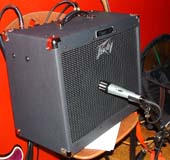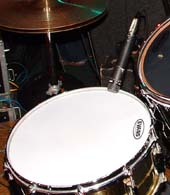How to Position a Microphone
Distance
The golden rule of microphone placement is get the distance right. In general, place the microphone as close as practical to the sound source without getting so close that you introduce unwanted effects (see below).
The aim is to achieve a good balance between the subject sound and the ambient noise. In most cases you want the subject sound to be the clear focus, filled out with a moderate or low level of ambient noise. The desired balance will vary depending on the situation and the required effect. For example, interviews usually work best with very low ambient noise. However if you want to point out to your audience that the surroundings are very noisy you could hold the mic slightly further away from the subject.
It is possible to get too close. Some examples:
- If a vocal mic is to close to the speaker's mouth, the audio may be unnaturally bassy (boomy, excessive low frequencies). You are also likely to experience popping and other unpleasant noises.
- A microphone too close to a very loud sound source is likely to cause distortion.
- Placing a mic too close to moving parts or other obstacles may be dangerous. For example, be careful when micing drums that the drummer isn't going to hit the mic.
Phase Problems
When using more than one microphone you need to be wary of phasing, or cancellation. Due to the way sound waves interfere with each other, problems can occur when the same sound source is picked up from different mics placed at slightly different distances. A common example is an interview situation in which two people each have a hand-held mic - when one person talks they are picked up by both mics and the resulting interference creates a phasing effect.
Think Laterally
You don't always have to conform to standard ways of doing things. As long as you're not placing a microphone in danger there's no reason not to use them in unusual positions. For example, lavalier mics can be very versatile due to their small size - they can be placed in positions which would be unrealistic for larger mics.
Examples


Next Page: Microphone Stands, Mounts, etc